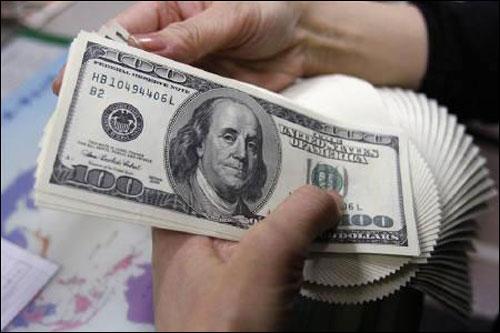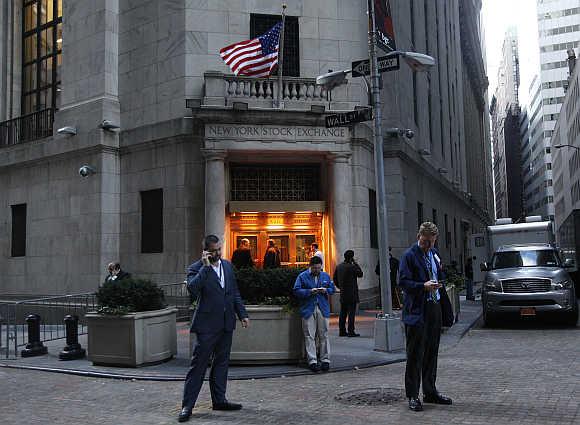
Much of the commentary on the emerging markets slump has centered on the idea that they are being hurt by fears of a withdrawal of stimulus by the Federal Reserve, the so-called 'taper' under which the US central bank might later this year shave back its monthly bond purchases, notes James Saft
Already halfway to a bear market, emerging market stocks face slumping commodities prices and what looks very much like a global trade slowdown.
Benchmark shares in emerging markets are slumping, with the MSCI Emerging Markets index down 10 per cent from its January peak, halfway to the 20 per cent fall that qualifies as a bear market.
While this is in contrast to strong gains in developed markets, which have been well supported by quantitative easing by major central banks, a quick look at data released by China over the weekend reveals the underlying reasons.
. . .

Overall exports by China showed their lowest rate of growth in nearly a year in May and, importantly, shipments to the US and the European Union fell outright for the third month running.
Imports into China also fell by 0.3 per cent, against expectations of a 6 per cent rise.
And with less demand for exports from its major trading partners, China is sucking in less raw commodities, with imports into China of everything from copper to coal falling sharply.
In fact, China is struggling with its own brand of deflation, that of producer prices, which fell at a 2.9 per cent annual rate in May.
. . .

Producer prices in China have now been falling for 15 straight months, three months longer than a similar decline during the financial crisis.
The overall picture is of slowing growth, and slowing demand, both for China's products and for the things which have benefited so much from its decades of frenetic development.
That's not just bad news for China, and unsurprisingly other emerging markets are suffering alongside.
India's rupee fell to an all-time low on Monday, while the South African rand, which is tightly correlated to demand for gold and other natural resources, fell by 2.2 per cent.
. . .

Much of the commentary on the emerging markets slump has centered on the idea that they are being hurt by fears of a withdrawal of stimulus by the Federal Reserve, the so-called 'taper' under which the US central bank might later this year shave back its monthly bond purchases.
That would indeed hurt emerging markets if it happened, but it is far from clear that it will, as the US is still struggling with under-employment and falling and below-target inflation.
Bad news in the US might, therefore, touch off a bit of an emerging markets relief rally, but don't count on it being sustained.
. . .

CARRY TRADES AND VOLATILITY
One culprit behind the poor recent performance of emerging markets is growing bond market volatility and the knock-on effect that that may be having on so-called carry trades, under which investors borrow money cheaply in one currency and then invest it for what they hope will be higher returns elsewhere.
Volatility is the enemy of the carry trade, making it expensive and sometimes ruinous.
And volatility, which had been at rock-bottom lows, has been rising in bond markets, in Japan, the US and Germany.
That is especially true in Japan, which may have been a major source of the carry trade and which has experienced a crisis in confidence in the Abenomics campaign to reignite growth.
. . .

It is true too that some of the flagging in demand for commodities and for cheap emerging markets exports may be a sign of a longer-term change in the way the global economy functions, with more manufacturing returning to the US, which now enjoys cheaper energy.
If so, that might imply longer-term difficulties for the commodity-intensive emerging market economies like South Africa, Brazil and Indonesia, all of which have been able to put off making arguably needed reforms and investments because they have been so handsomely paid for simply growing stuff or digging it out of the ground.
. . .

To be sure, even in a world with more US manufacturing you can make a fundamentally good case for long-term emerging market investment.
Not only are share market valuations lower there than in the US and Europe, but countries like China are capable of launching self-sustaining consumer-based economies.
A disruption of the long-term pattern of concentrating on commodities and exports might actually bring forward the development of domestic markets.
Indeed many expect China to respond to a sustained slowdown in growth with stronger policies aimed at just that.
Still, that transition won't be easy, not if the US recovers and the Fed tapers or if manufacturing migrates back across the Pacific.
Nor, ultimately, would another couple of years of slow growth in the US and Europe be very helpful, even if it came along with monetary policy anesthetic.
The writer is a Reuters columnist. The opinions expressed are his own
At the time of publication, Saft did not own any direct investments in securities mentioned in this article.
He may be an owner indirectly as an investor in a fund.